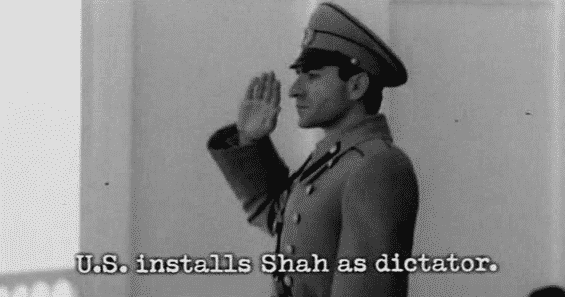Does the developing conflict between the powers gravitating around Iran and Saudi Arabia replicate some features of the complex Cold War competition between the US-led and Soviet-led orbits for almost half a century after the Second World War? Has the tentative agreement on the 5+1 nuclear negotiations with Iran strengthened the axis of collaboration between nuclear-armed Israel and right-wing Saudi militants? Do Sunni-Shi’a antagonisms best explain the proliferating conflicts throughout Eurasia or does an emphasis on intra-Islam sectarianism disguise the deeper geopolitical explanations of the conflict as the continuation of liberation struggles by Indigenous peoples to free themselves from new variations of imperial rule?
The following is the transcript of an exchange between Zahraa Karimi of the Mehr News Agency in Iran and Anthony J. Hall, Professor of Globalization Studies at the University of Lethbridge in Alberta Canada.
In the last few days, KSA has launched many air strikes against Yemen after the people of this country ousted their dictator president. The US and also the UK and France expressed support for these attacks against Yemen. This seems in contradiction to what the US has always claimed of democracy. Democracy in other countries has always been a kind of pressure in the hands of the US to press on other countries. The fact that the US uses democracy claims as a tool to use for its own interests and its acting like a double-dealer in Yemen and even Bahrain issues, I would like to know your opinion.
How do you see the role of the US in the events there? They have constantly shown use of double standards in the region from support for Egypt’s Hosni Mubarak up to his last days in power to support for Bahrain regime atrocities and even to Ukraine where they showed another form of double standards in regard to democracy.
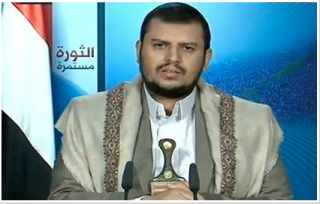
Hall: You use the terms “double-dealer” and “double standards” to describe the US role vis a vis the recent Saudi-led air attacks on Yemen as well as in relation to the often hypocritical US rhetoric on democracy. In my estimation, your characterizations are fair and justified.
Let’s use your observation to suggest a framework within which to view the coalescing coalition of interests and powers backing this Saudi aggression on its Yemeni neighbor. Converging in this coalition is a surprisingly wide array of interests and powers including the governments of Israel, Egypt, Pakistan, and member polities of the Gulf Cooperation Council. These include Bahrain, Oman, Kuwait, and the United Arab Emirates.
The Saudi attack is directed at an amalgam of groups and forces attempting to fill the vacuum of power left by the escape from Yemen at the conclusion of the term of the besieged former president, Mansur Hadi. Hadi is currently living under the protection of the Saudi monarchy whose spokesmen refer to him as Yemen’s rightful ruler.
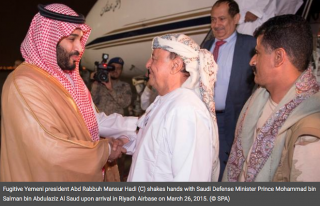
The power vacuum is being filled by Houthi militia groups that have been pushing southward from North Yemen towards the Indian Ocean in partnership with a widening array of allied groups including supporters of a former longtime Yemeni president, Ali Abdullah Saleh. Starting in 1978 Saleh ruled North Yemen which was united with the former Marxist stronghold of South Yemen in 1990. Saleh retained power in Yemen until 2012.
As the Houthi-led forces move from Yemen’s capital of Sana’a towards the former British imperial stronghold of Aden, they are moving simultaneously into position to assert a measure of military muscle over the passage of vessels through the Bab el-Mandeb Strait. This Strait forms a strategic bottleneck along the iconic route linking the Mediterranean, the Red Sea, and the Indian Ocean through the Suez Canal.
In his recent Congressional speech in Washington, Israeli Prime Minister Benjamin Netanyahu made much of the scepter of a hostile power controlling the Mandeb corridor. Quite clearly Netanyahu’s main concern is that the rise of a Yemen no long subject to the indirect rule of the Saudi monarchy would threaten Israel’s present military role in the region. In particular, Israel would face a significant shift in its geopolitical position if it could no longer reliably move its nuclear-armed submarines back and forth through the Mandeb Strait to take up positions off the coast of Iran.
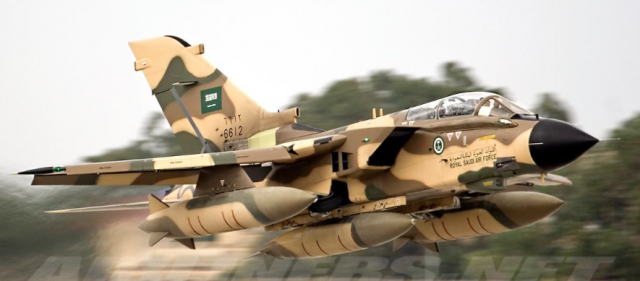
Like every topic he identifies that does in fact or in his imagination touch on some aspect of Iranian power, Netanyahu has used the most inflammatory language imaginable to depict what is going on in Yemen as part of a massive conspiracy. Replicating much of the same kind of language developed to demonize the Soviet enemy during the Cold War, Israel’s neocon boss is obsessed with the Islamic Republic of Iran and its real or imagined expansion of influence and control throughout much of Eurasia.
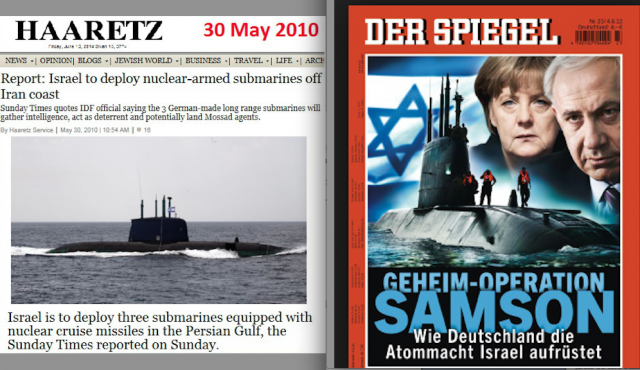
That’s informative. But how is this analysis connected to the double-dealing of the US government? And why are the Saudis attacking now? What is the larger context of this shock-and-awe-style military intervention by the Saudi monarchy at the southeastern end of the Arabian Peninsula? Are the air assaults connected to the most recent developments in the saga of the 5+1 negotiations on nuclear power and economic sanctions against Iran?
Hall:I was just getting to the role of the United States in what is sometimes referred to as the new Cold War in the Middle East that pits Saudi Arabia and its orbit of patron and client regimes against the widening sphere of influence gravitating around the Islamic Republic of Iran. The US government is trying to play its hand on both sides of this division. Indeed, this double-dealing is right now one of the most glaring features of international geopolitics.
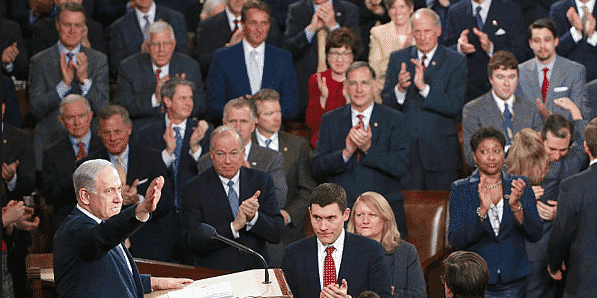
Netanyahu’s very provocative Washington speech highlighted the internal split within the United States about how its government should be oriented to the larger global community. Netanyahu’s presentation, directed first and foremost at his own domestic audience on the eve of an Israeli election, brought to the surface the full implications of the schizophrenic divide in US foreign policies. The fault lines in this divide have become especially prominent in the growing schism splitting the US executive branch from the Republican Party’s domination of the US Congress.
The Obama-Netanyahu antagonism shows evidence that a modest beginning is being made within the United States to sort out the disparity between American national interests and the national interests of Israel. At the same time, Congress’ elevation of a foreign leader over a sitting US president demonstrated the corruptibility of so many politicians who have been bribed and intimidated into offering near unlimited support for even the more radical neoconservative extremes of imperial Zionism.
This trajectory of US ultra-Zionism has overlapped and meshed with the superpower’s close oversight of the governance of the Arabian Peninsula. Franklin D. Roosevelt formalized the special US relationship with the family of Ibn Saud in one of his last official acts as US president before his death in 1945. Roosevelt visited the Saudi plutocrat essentially to claim for the United States the vast oil reserves of Saudi Arabia as its major prize for its triumphal emergence from the Second World War.
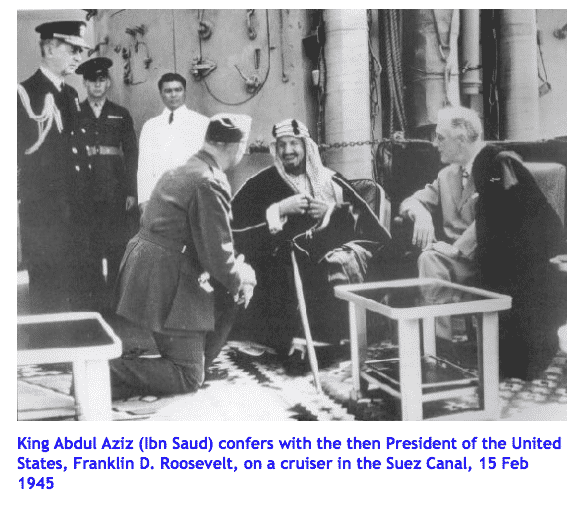
With the backing of the world’s dominant military superpower, the favored clan of Ibn Saud was given the green light to engineer Saudi Arabia as the realm of a royal family that invested in itself with a self-proclaimed imperative of dictatorial rule over the local population. The importance of the Saudi petrotyranny in the US orbit of power increased dramatically after 1973 when the two governments negotiated a secret deal. US President Richard Nixon agreed that the Saudi government could raise oil prices by about 400%.
The condition of this financial windfall was that the Saudis must enforce through their own role in the Aramco oil cartel and through their dominant position in OPEC the principle that the black gold of the industrial age must be purchased in US dollars. The outcome of this arrangement was that the world’s dominant currency would henceforth become for all intents and purposes the Saudi-US petrodollar.
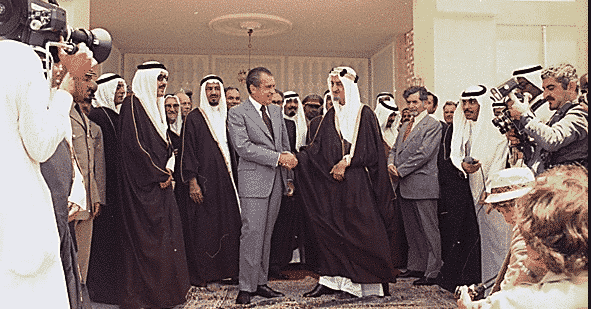
This transaction helped the world’s dominant banking establishment maintain the US dollar as the world’s primary medium of international trade in spite of the fact the US government had formally removed US money from the gold standard in 1971. This deal helped extend the US advantages obtained during the Second World War into the post-1973 era even though the American manufacturing sector and the American working class were already moving towards a period of sharp decline.
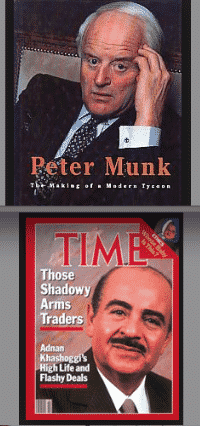
The creation of the Saudi-American petrodollar cemented a geopolitical partnership that is now on full display in the Saudis’ very high-tech assault with US-made weaponry on the civilian populations and public infrastructure of Yemen. Much of this Saudi weaponry is well integrated with the war machinery of both Israel and the USA and the many puppet regimes in their orbit that are currently backing the illegal attacks on Yemen with all its lethal effects on civilian populations.
I have recently been studying an interesting vehicle of Saudi-Zionist collaboration, an increasingly integral axis of interaction in the renewal of the informal Anglo-American empire. The Canadian-based company, Barrick Gold, was a vehicle of this collaboration. With Adnan Khashoggi as its initial promoter, Barrick Gold brought together Saudi-based agents of the US military cartels together with the CIA and the Bronfman family dynasty whose networks of intrigue included a dominant role in the World Jewish Congress.
In the 1990s Barrick was instrumental in flooding the gold markets in order to devalue world gold prices and thereby keep the value of Saudi-American petrodollars from plummeting. With the guidance and help of former US President George H.W. Bush, the Barrick Gold Company was part of a consortium of favored corporations operating behind a veil of national security. As partially exposed in revelations about the role of the notorious Bank of Credit and Commerce International in the Iran-Contra scandal, many of these favored corporations combined investments by the Saudi royal dynasty with the directing influence of Israeli First operatives that have quickly risen to the top of many power structures including those presently dominating my own country of Canada.
The latest alignment of Saudi-Israeli-US intervention in Yemen is directed at maintaining the status quo of control over the oil and gas deposits of the Arabian Peninsula and communication links through the Straits of Bab el-Mandeb. While the current round of Saudi air attacks on Yemen is thus consistent with some existing relationships of power, the outbreak of heightened violence also announced some tectonic shifts in the Middle East’s geopolitical landscape.
An important facet of this shift is reflected in the fact that, rather than simply echoing the anti-Iranian polemics of the Netanyahu government, one element of the US government has opted to develop some rudimentary capacity for rational discourse with the Islamic Republic’s leadership. This move away from utter subservience to the Netanyahu line is reflected in the reaching of an interim settlement on the 5+1 negotiations, a significant mark of achievement for the UN system notwithstanding the deal’s provisional and problematic nature.
The Saudi attack on Yemen is happening, therefore, during a period of great stress and flux in the international balance of power. It is happening at a moment

when there is finally evidence that the US government, or at least one facet of it, is beginning to distance itself however slightly from its Saudi and Israeli allies.
Both the Saudis and the Israelis find common ground in their unequivocal hostility to the Islamic Republic of Iran. The US government is, of course, currently trying to have it both ways as exemplified in the contradictory messages coming from US Secretary of State John Kerry. Kerry is speaking out of both sides of his mouth when he expresses US support for Saudi Arabia’s bombing missions in Yemen even as he concurrently makes overtures of reconciliation towards Iran.
This most recent round of US duplicity and double-dealing grows out of a long history of two-sided US policy towards Iran. I can well understand the frustration of those most directly on the receiving end of this duplicity. It is the Iranian people who are most directly affected by the 5+1 negotiations and the rounds of economic warfare that continue to be directed their way on account of Israel’s litany of lies.
For the Iranian people, it must be grating to be subjected to the gross injustices emanating from the double standards on full display in the 5+1 negotiations. The superpower’s leadership feigns blindness to the gross contradictions between the rules it wants to impose on Iran and the superpower’s own possession of massive nuclear arsenals together with its own secret programs for developing new nuclear technology.
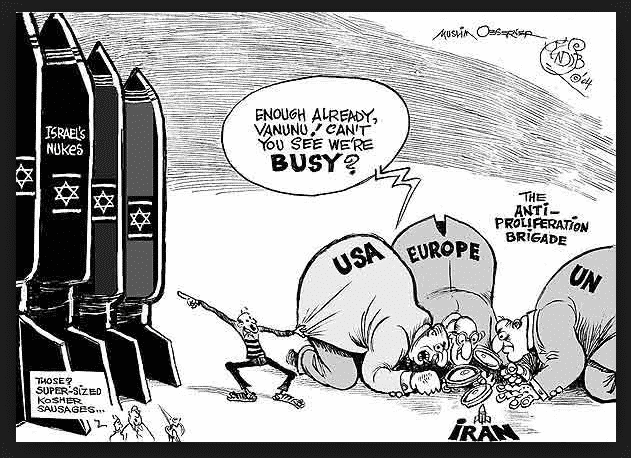
Even more outrageous is the double standard inherent in Netanyahu’s government’s condemnation of Iran even as the Israeli government busily builds up its own nuclearized war machine including the nuclear-armed submarines it regularly parks off Iran’s coast. The Israeli aggression toward Iran is manifest in the arrogance of Israel’s current leadership which seems to believe it possesses some sort of proprietary right to dictate to the US government what its policies towards Iran should be. God did not choose the Israeli government to be the dictator of US policies and actions.
Apparently, Netanyahu thinks nothing of preempting the American people’s own sovereign right of national self-determination through their election of the US President, the only US official whose mandate to govern is derived, in theory at least, from the whole population. On the other hand, not even one US citizen voted for Netanyahu whose intervention in US domestic politics is arguably treasonous and certainly constitutionally dubious.
The split between Netanyahu and Obama over the treatment of Iran embodies the clearest demonstration I have seen in my lifetime that the governments of the United States and Israel can disagree publicly and stridently on a major issue of public policy. US policy towards Iran has become a major political symbol of what the USA will become. Can the American Dream be redeemed or will the entrapment of the United States in seemingly endless rounds of aggressive warfare, international criminality, mass murder, and treason from within continue the American Nightmare sucking all humanity into its psychotic embrace?
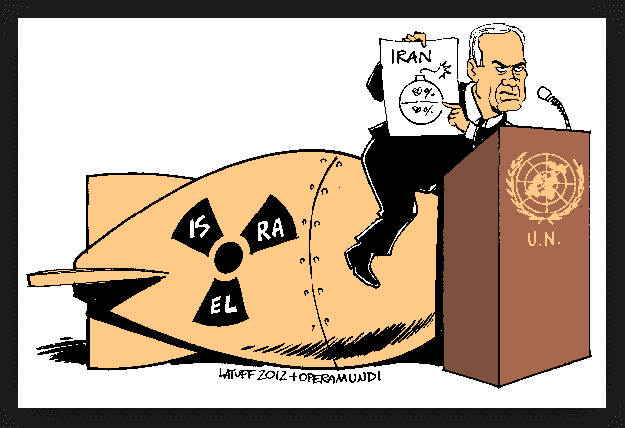
This US-Israeli split over Iran puts all the governments of the UN Security Council plus Germany in positions that stop short of Netanyahu’s bloody-minded extremism. Recognition of this new reality is sending shock waves through the international community.
Its impact seems to be a factor in the decisions of those governments that are uniting around Saudi Arabia’s decision to intervene in Yemen in order to prevent the integration of Yemen’s post-Hadi government into Iran’s orbit of influence. Indeed, perhaps the subtle but very significant shift in US policy has been a factor in the Saudi decision to intervene militarily in Yemen with such high-tech intensity.
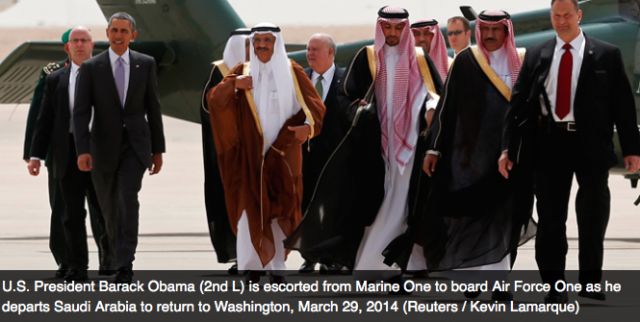
What is the glue of the surprisingly large group of interests that are rallying around the Saudi regime’s military intervention in Yemen? How much is religious sectarianism a factor in the alignment of forces clashing in the Arabian Peninsula? How do the legacy of colonialism and empire figure in the mix? How is this new outbreak of high-tech warfare connected to the violent conflict in Syria and Iraq and the recent history of strife within Libya, Bahrain, and Egypt?
Hall: Of course, a dominant motif of reporting on the so-called New Cold War in the Middle East is to frame the conflict as an expression of antagonism between adherents of Shi’a and Sunni strains of Islam. On the one hand, the Islamic Republic of Iran is depicted as the dominant power backing Shi’a peoples and powers.
On the other hand, Saudi Arabia is characterized as a primary benefactor of polities and factions dominated by Sunni Muslims. This trajectory of interpretation is being widely seized upon to explain the dynamics of the Saudi monarchy’s attack on Houthi forces in Yemen.
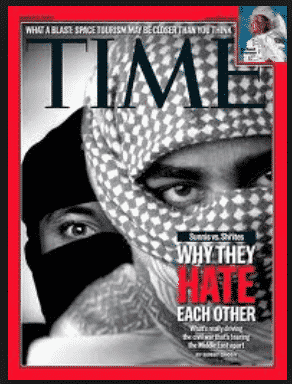 The Shi’a-Sunni dichotomy within Islam is, without doubt, a significant factor in the alignments of forces described by some as the new Cold War of the Middle East. The original Cold War revolved around competition between US-led and Soviet-led constellations of power in ways that dominated global geopolitics for almost half a century after the Second World War. The original Cold War helped shape many of the configurations of friendship, alliance, trade, and animosity presently at play in the world.
The Shi’a-Sunni dichotomy within Islam is, without doubt, a significant factor in the alignments of forces described by some as the new Cold War of the Middle East. The original Cold War revolved around competition between US-led and Soviet-led constellations of power in ways that dominated global geopolitics for almost half a century after the Second World War. The original Cold War helped shape many of the configurations of friendship, alliance, trade, and animosity presently at play in the world.
The metaphor of the new Cold War provides the most formulaic way of viewing Iran’s backing of Hezbollah in Lebanon, the Assad government in Syria, as well as the Islamic Republic’s growing influence among the predominantly Shi’a population and government of post-Saddam Iraq. It also provides a key to many interpretations of the support Iran is alleged to be giving the Houthi militia as well as its allies and supporters throughout Yemen. Alternatively, the alliance of Islamic powers rallying around the aggressive warfare of Saudi Arabia can be said to share a Sunni orientation to Islam.
There are severe limitations to this interpretive framework. It can be exploited, for instance, to draw attention away from important underlying factors in the expanding spheres of military conflict in Eurasia. It provides a perspective on the military confrontations that tends to steer attention away from the economic factors behind the conflicts. Moreover, it can create a veil of distraction from the extraordinarily influential role of the Israeli deep state in concocting and implementing divide-and-conquer strategies that have been a mainstay of imperial rule for millennia.
I for one am wary of depending too heavily on sectarian explanations of the rampant Muslim-on-Muslim violence currently overtaking large parts of the Middle East. My skepticism is informed by my study of the West’s exploitation of theological controversies within Islam. This tactic first served the imperial agendas of the European powers. In the era of the Cold War, it became expedient to help the US-led side put up religious obstacles to the spread of atheistic communism, especially throughout Eurasia.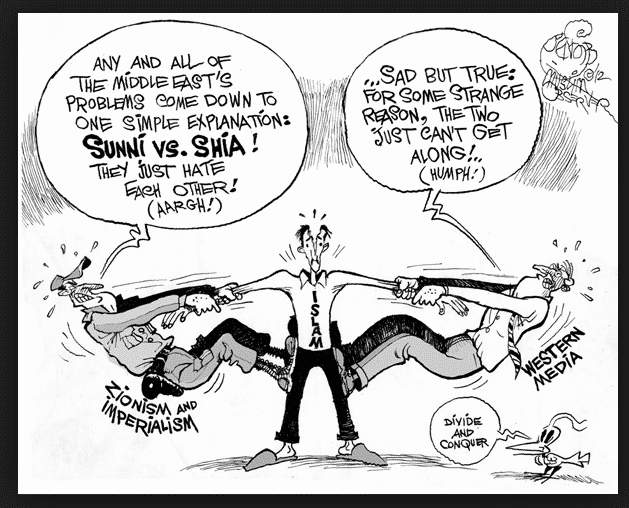
The manipulated instrumentalization of Islam is being renewed with a vengeance in the post-9/11 era. The complex and many-faceted ruse is taking place in the name of the seemingly never-ending Global War on Terror with all its offshoots and incarnations. This tool of geopolitical manipulation is being deployed to serve certain interests in Israel, the United States, the UK, and a broad array of NATO countries. All these nationalities host corporate polities that derive profit from sectarian violence between and among Muslims, violence the directors of these commercial entities may try to influence or direct in various ways.
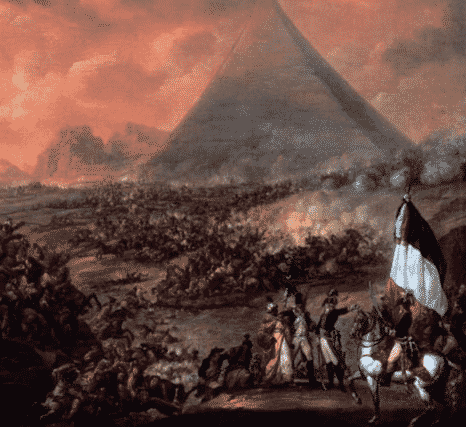
My studies in these topics bring me back again and again to an appreciation of the importance of the scholarship of the Palestinian-American thinker and activist, Edward Said. The late Prof. Said is most famous for his text, Orientalism. Going back to the eighteenth and nineteenth centuries, Said brought to light the history of the West’s objectification especially of the Middle Eastern cultures in ways that seemingly justified the imperial dominance of European powers over subject peoples.
This same paradigm seems to be operational once again with the largely manufactured imagery injected into many Western minds of Muslims as terrorists or as people who harbor terrorists. The demonizing and dehumanizing signifiers in this form of mind control are being deployed once again to justify all manner of violations by the Western powers of the human rights of Indigenous peoples, especially throughout Eurasia.
These violations have at their heart the supreme international crime of aggressive warfare resulting in mass murders, mass torture, and the wholesale displacement of entire populations. Especially since 9/11, this violent process has been extended from Afghanistan to Iraq to Libya to Syria and now quite possibly to heightened levels of violence in the battlefields of Yemen. The Saudi attack on Yemen adds a new twist to the post-9/11 depiction of Islam as a religion of conquest.
In countries where the manufacturing of Islamophobia is becoming big business, not to mention a boon to the careers of many politicians, we are being exposed to a steady diet of corrosive media coverage characterizing Islam as a religion of the sword including violent sectarianism among Muslims. In order to counter the massive disinformation and bias embedded in this variety of propaganda, I seek very deliberately to interpret conflicts like that currently unfolding in the Arabian Peninsula through an interpretive lens emphasizing colonialism as well as the struggle against colonialism.
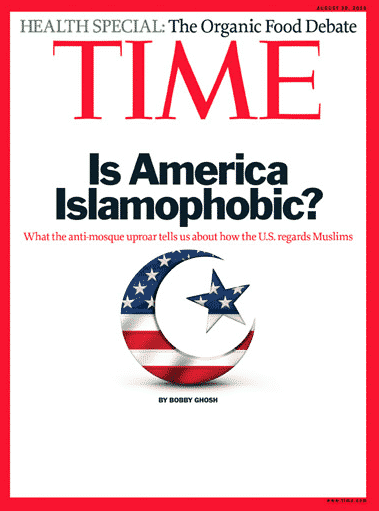 As I see it, Saudi Arabia and some of the policies supporting its air attacks on Yemen have inherited the imperial legacies especially of the old European empires and of Anglo-America. The polities dotting the southern coast of the Persian Gulf are all dominated in one way or another by regimes created to serve the interests of European empires. Saudi Arabia’s propping up of the Sunni clan whose ongoing rule depends on the violent repression of Bahrain’s Shi’a majority constitutes an example of the kind of top-down authoritarianism synonymous with imperialism and neo-colonialism.
As I see it, Saudi Arabia and some of the policies supporting its air attacks on Yemen have inherited the imperial legacies especially of the old European empires and of Anglo-America. The polities dotting the southern coast of the Persian Gulf are all dominated in one way or another by regimes created to serve the interests of European empires. Saudi Arabia’s propping up of the Sunni clan whose ongoing rule depends on the violent repression of Bahrain’s Shi’a majority constitutes an example of the kind of top-down authoritarianism synonymous with imperialism and neo-colonialism.
At the end of the Second World War, the United States became the primary inheritor of wealth and power originally amassed through the dark enterprises of imperial Europe but especially those of the British Empire. As the Second World War ended the United States delegated some of its newfound influence and authority to Israel and the government of Saudi Arabia. The United States also jumped into the internal politics, including Islamic politics, of Pakistan. Pakistan was created in 1947-48 to express imperial Britain’s divide-and-conquer strategies even in the process of formal decolonization of a partitioned India.
The dominant interests working through the intertwined polities of Israel and Saudi Arabia took control of huge concentrations of capital built up over generations of imperial rule. Some of this imperial capital was derived from the commercial exploitation of the trans-Atlantic slave trade as well as the stealing of land and natural resources from Indigenous peoples on several continents. The demonstration of strengthened ties between Israel and Saudi Arabia in the shared effort to counter the quest of the peoples of Yemen for self-determination signifies the resilience of imperial relationships of power long after many formal enactments of decolonization took place, especially in the 1960s.
The people and polity of Iran have experienced their own unique relationship to colonialism, especially since the Royal Navy of Great Britain shifted from coal to oil in a process that elevated the Anglo-Persian Oil Company to the great heights of imperial prestige and influence. Alternatively, the individuals within Iran that have tended to oppose the incursions of colonialism have drawn on the identity of their home and native land as an ancient civilization with roots much older than sovereign nation-states.
Like China and Egypt, Iran is no product of a recent colonial construct artificially imposed through the will of European powers. The strength derived from the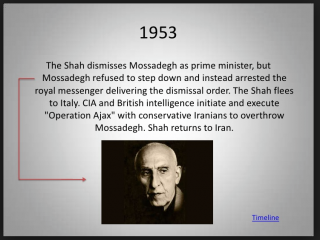 ancient civilization of Persia was no doubt a factor in the effort led by the Iranian Prime Minister Mohammad Mosaddegh during the mid-twentieth century to nationalize ownership of his country’s vast oil and gas resources. The deep state operatives of the Anglo-American empire countered this seminal demonstration of the will to indigenize control of natural resources. The US-led side in the Cold War sought to neutralize Mosaddegh’s seminal attempt to expand the assertions of political self-determination to new frontiers of economic self-determination.
ancient civilization of Persia was no doubt a factor in the effort led by the Iranian Prime Minister Mohammad Mosaddegh during the mid-twentieth century to nationalize ownership of his country’s vast oil and gas resources. The deep state operatives of the Anglo-American empire countered this seminal demonstration of the will to indigenize control of natural resources. The US-led side in the Cold War sought to neutralize Mosaddegh’s seminal attempt to expand the assertions of political self-determination to new frontiers of economic self-determination.
The proponents of continuing imperial rule over Iran prevailed for a time. The operatives of the Anglo-American empire elevated the monarchical rule of the Pahlavi family dynasty in order to apply the principles of indirect rule then in vogue. The Shah of Iran presided over the country’s governance as a puppet dictator from 1953 to 1979. He held onto power through the internal violence of his CIA-Mossad-directed secret police force, SAVAK. The Shah’s run of foreign-backed authority was displaced and then replaced by an indigenous movement animating a religious revolution led by Shi’a cleric Ayatollah Rouhalla Khomeini.
At first, this shift was sanctioned by the US-led side in the Cold War during a period when the US government was beginning to create, train, and arm with Saudi assistance an Islamic proxy army, the mujahedeen including al-Qaeda. The main aim of this nominally religious enterprise was to overthrow the Soviet-backed government led by Mohammad Najibullah in Afghanistan. The suggestion of duplicity and double-dealing runs throughout this whole saga of American involvement in the exploitation of political Islam as a platform from which to mount attacks on the Godless communism supposedly animating the Soviet empire.
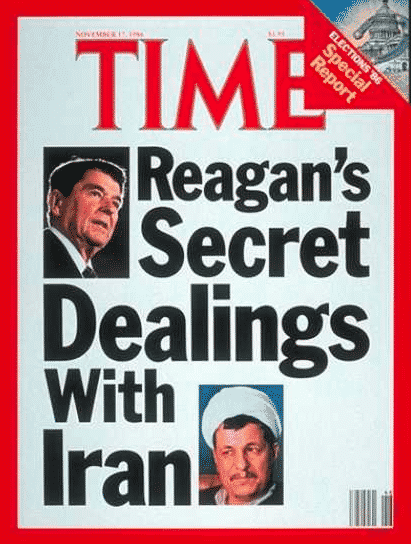 Suggestions of duplicity are to be seen in the exploitation of the US hostage crisis in Tehran in 1980 by the US presidential candidate Ronald Reagan and his running mate, former CIA Director George H.W. Bush. The Reagan campaign team made a secret deal with the leadership of the Iranian Revolution not to release the US hostages until Ronald Reagan was formally installed as US President.
Suggestions of duplicity are to be seen in the exploitation of the US hostage crisis in Tehran in 1980 by the US presidential candidate Ronald Reagan and his running mate, former CIA Director George H.W. Bush. The Reagan campaign team made a secret deal with the leadership of the Iranian Revolution not to release the US hostages until Ronald Reagan was formally installed as US President.
Once in power, the national security apparatus of President Reagan secretly sold arms to the Iranian government even as it also backed the anti-Iranian hostilities of the Iraqi government led by Saddam Hussein. This history of double-dealing leads naturally to many still-unanswered questions about how much the new Cold War of the Middle East is rooted in the covert operations of the original Cold War. How much is the Sunni-Shi’a, Saudi-Iran conflict an outgrowth of local conditions, and how much is this division an outgrowth of geopolitical strategies advanced by the dominant imperial powers historically and today?
Whatever the answer, the Islamic Revolution now being exported from Iran can be seen not so much as an expression of sectarian competition within Islam but rather as a manifestation of the worldwide movement of Indigenous people seeking decolonization. This quest of Indigenous peoples for freedom from the imperialism of the European powers and then from the bipolar imperialism of the mirrored superpowers in the Cold War did not end on 9/11. Indeed a false interpretation of the originating event of the 9/11 Wars has provided a specious rationale for the repression of the freedom struggles of Indigenous peoples in the name of anti-terrorism.
The engineering of the media iconography of violent Islamic jihad has strengthened the imperial hand, especially of the Israeli government in its bid to dominate the so-called West. The Israeli backing of the Saudi air attack on Yemen epitomizes the downloading of the legacy of imperial conquest onto some of its main beneficiaries in the Middle East. What more is there to say about the Saudis’ shock-and-awe display of imperial air power in order to block the expansion of Iran’s anti-colonial revolution to Yemen, a country whose citizens are predominantly Sunni?
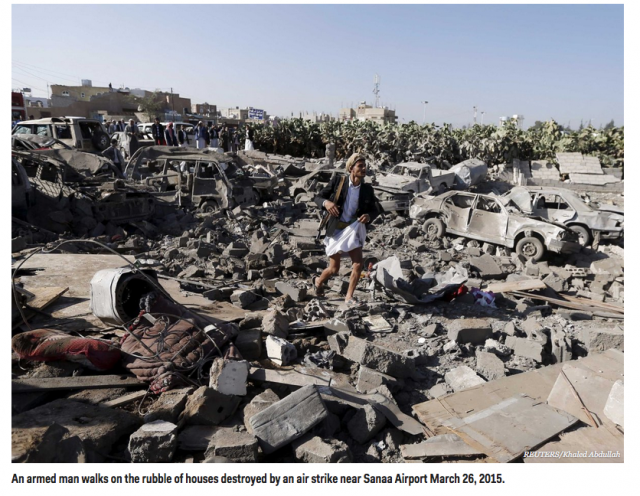
While the anti-colonial aspect of the Iranian revolution can be seen as one of its most important attributes, the religious character of the Islamic Republic is essential to its international role. Iran’s religious mission has great potential to be expressed in a variety of interfaith dialogues. E. Michael Jones is an outspoken champion of the obvious commonalities between the conservatism of Iran’s religious governance and the conservative branch of the Church of Rome. Similarly, Sheik Imran Hossein has become a prophetic voice of the developing alliances between the Islamic world and Byzantine Christianity but especially the Russian Orthodox Church.
Iran’s role as a proponent of the anti-colonial struggle extends to its strong relations with the Alba countries of Latin America including Venezuela, Cuba, Ecuador, Bolivia, Nicaragua, and Dominica. The government of Iran finds much common ground with those that have been on the front lines of European and US empire-building for many generations.
With their agenda of socialist renewal, the Alba countries draw on the resistance of the Indigenous peoples to colonialism in the Americas since 1492. As I see it, the people and government of the Islamic Republic of Iran will quite likely be attracted to support such liberation struggles as its leaders widen their circle of friends, allies, and business partners in a more open and multipolar world.
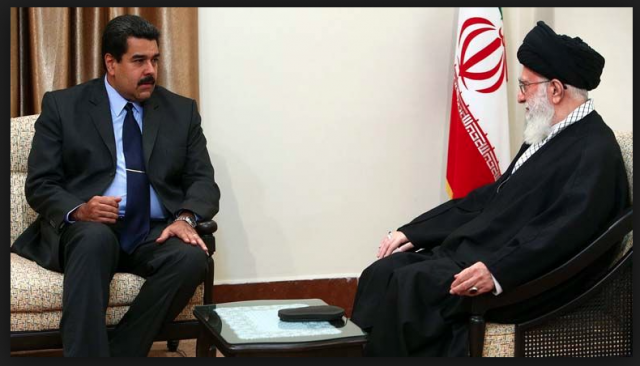

Anthony Hall is a Professor of Globalization Studies at the University of Lethbridge in Alberta Canada where he has taught for 25 years. Along with Kevin Barrett, Tony is co-host of False Flag Weekly News at No Lies Radio Network. Prof. Hall is also Editor In Chief of the American Herald Tribune. His recent books include The American Empire and the Fourth World as well as Earth into Property: Colonization, Decolonization and Capitalism. Both are peered reviewed academic texts published by McGill-Queen’s University Press. Prof. Hall is a contributor to both books edited by Dr. Barrett on the two false flag shootings in Paris in 2015.
Part II was selected by The Independent in the UK as one of the best books of 2010. The journal of the American Library Association called Earth into Property “a scholarly tour de force.”
One of the book’s features is to set 9/11 and the 9/11 Wars in the context of global history since 1492.
ATTENTION READERS
We See The World From All Sides and Want YOU To Be Fully InformedIn fact, intentional disinformation is a disgraceful scourge in media today. So to assuage any possible errant incorrect information posted herein, we strongly encourage you to seek corroboration from other non-VT sources before forming an educated opinion.
About VT - Policies & Disclosures - Comment Policy



